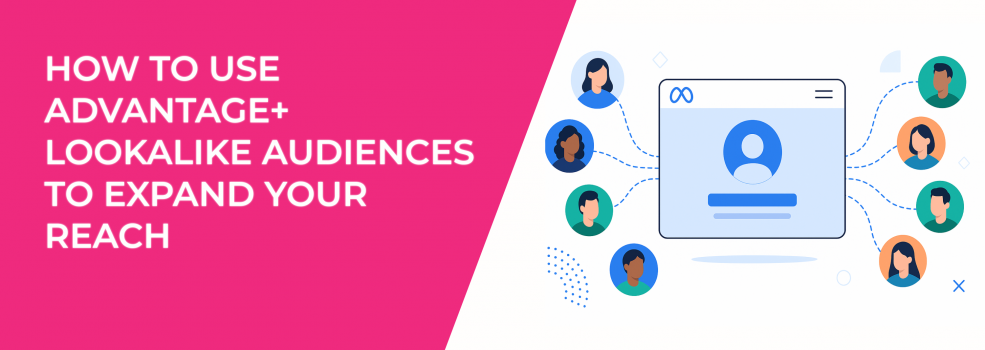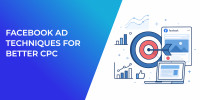For Facebook and Instagram advertisers, finding new customers who actually convert has always been a balancing act. Go too broad, and you risk wasting spend on uninterested scrollers. Go too narrow, and you miss out on scale. But what if your campaign could adapt on its own, testing reach, adjusting on the fly, and stretching beyond your audience without you lifting a finger?
That’s the idea behind Meta’s Advantage+ Lookalike tool.
If you’ve worked with Lookalike Audiences before, you already know the basics: upload a custom audience of high-value users — say, past purchasers, loyal subscribers, or your best-performing leads — and Meta finds new people who look like them, based on behavior and demographics. But Advantage+ Lookalike adds a layer of smart delivery on top of that.
Let’s break it down.
What Is Advantage+ Lookalike (and Why Should You Care)?
Think of Advantage+ Lookalike as Lookalike Audiences with a performance brain.
Instead of strictly sticking to the audience percentage you set — 1%, 2%, 5%, etc. — Meta uses that Lookalike as a guide, not a cage. It tests outside those boundaries when it sees strong signals that someone might convert. Maybe that person falls just outside your original audience slice, but behaves similarly to your best customers. With Advantage+, your ads can still reach them.
So what’s the real benefit? You get broader reach without sacrificing relevance. And Meta only expands when it believes doing so will help performance.
To better understand how Meta uses audience expansion intelligently, explore how Advantage+ can boost results even when standard targeting starts falling short.
How Advertisers Can Use It (Without Losing Control)
One of the biggest concerns advertisers have with automated tools is control. What if your ads start showing to people totally outside your ICP? What if your spend gets diluted?
Here’s the nuance: Advantage+ Lookalike doesn't replace your Lookalike Audience—it enhances it. Meta still uses your original custom audience as the anchor. That means your ad delivery starts with intent, then stretches only if it sees meaningful lift.
So if you’re using a customer list of high-LTV users or website visitors who’ve hit a conversion event, Meta will look for new users similar to them—but will also explore just outside that bubble. It’s like giving your campaign a bit of breathing room while keeping its core intact.
A few actionable tips:
-
Start with high-quality seed audiences. The better your custom audience, the smarter Meta’s expansion. Avoid uploading cold or low-quality leads—focus on converters, purchasers, or people with high engagement.
-
Monitor performance trends, not just audience definitions. Instead of asking, “Is this still my Lookalike?”, ask, “Is performance improving?” Watch your CTRs, CPA, and ROAS over time.
-
Test different percentages. Try 1% vs 5% Lookalikes with Advantage+ enabled. See how far Meta goes in expanding each audience and which drives better returns.
Want to build smarter seed audiences? This guide to Custom Audiences breaks down why quality input data is everything.
Where It Works Best (and When to Be Cautious)
Advantage+ Lookalike shines when you’ve hit a plateau with your current targeting. Maybe your 1% Lookalike is performing well, but you’re running into frequency issues or increased CPMs. Letting Meta stretch the boundaries can reinvigorate your results.
It also works well in prospecting campaigns where budget efficiency matters, but you still want to scale. If you're looking to move beyond retargeting and reach net new customers, this is a smart lever to pull.
That said, don’t treat it like a silver bullet.
-
Avoid applying it to highly regulated verticals. Advantage+ Lookalikes are not available or may be limited for categories like financial services, employment, and housing. Always double-check Meta’s policies before running in those spaces.
-
Stay alert to audience overlap. If you’re running multiple ad sets with different Lookalike percentages, Meta may blur the lines with Advantage+, so be mindful of performance attribution and reporting. To dive deeper into how overlap affects efficiency, check out this breakdown on audience overlap and Facebook ad performance.
Imagine you run an online store selling eco-friendly home goods. You’ve been running ads using a 1% Lookalike based on your best customers—those who purchased more than once. Performance is steady, but your growth is tapering.
With Advantage+ Lookalike, Meta starts by targeting that 1%, but it also notices that people just outside that range (say, users who shop sustainable brands, follow eco-influencers, and engage with home décor pages) are showing strong conversion signals. So it adjusts, nudging your ads toward those prospects too.
The result? You get more reach and more conversions, without having to adjust the targeting yourself.
Integrating Advantage+ with Other Meta Tools
Meta’s Advantage suite is quietly becoming essential for anyone trying to control Facebook ad spend in a world of reduced targeting options.
Pair Advantage+ Lookalike with:
-
Advantage+ Placements — let Meta automatically distribute your budget across placements where your ads perform best. You can learn how Advantage+ handles placements efficiently in this quick guide on optimizing placements automatically.
-
Advantage Campaign Budget — use it to dynamically shift spend between ad sets to where Meta sees the best results.
-
Advantage Detailed Targeting — a similar concept to Advantage+ Lookalike, but for interest-based audiences.
Using these tools together creates a more agile campaign setup, one that learns and evolves as your campaign runs.
Isn’t that what most advertisers want? Smarter spending without micromanaging?
Final Thoughts
Advantage+ Lookalike is one of the most underappreciated tools in Meta’s targeting toolbox. It takes the power of Lookalikes and removes the rigidity, letting performance drive scale.
In a world where signal loss and privacy changes have made precision more difficult, the smart move is to lean into tools that adapt in real time.
So next time you set up a new prospecting campaign, don’t just ask “Who do I want to reach?” Ask: who might I be missing?
Advantage+ might just have the answer.

